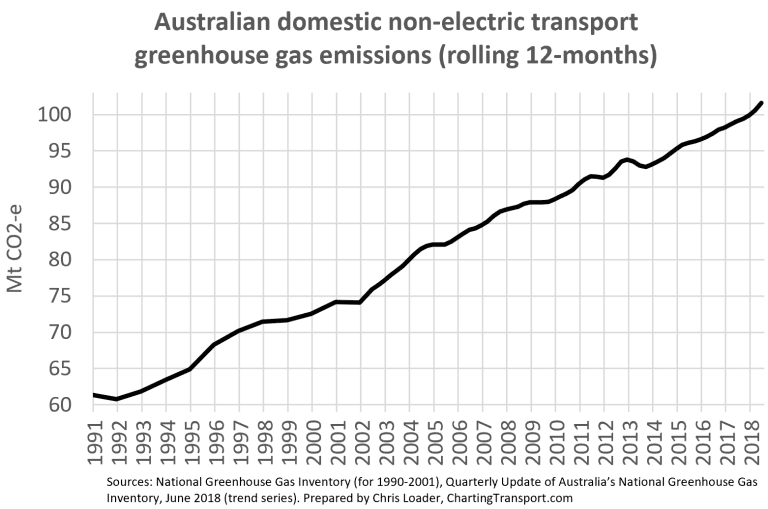Whether it’s claiming that Australia will meet its Paris Climate Agreements “in a canter”, or releasing a one-page electric vehicle strategy with no actual details, one thing is sure: the LNP is just plain wrong about Australia’s climate progress.
So wrong that 28 scientists got together earlier this week to put the Australian public right: Australia is not on track to meet its 2030 GHG emissions targets, nor are those targets even sufficient to avoid irreversible climate change.
As signatory and Climate Councillor Greg Bourne pointed out on Monday morning to ABC Radio, the fact of the matter is that the misrepresentation by the LNP is “unbelievably misleading”.
“Anyone who goes into the data sets, and they’re really quite easy to look at, with some very nice graphs, show emissions rising ever since, basically, the Abbott government came in,” he said.
As so succinctly put by Sophie Vorrath in Renew Economy on Monday, “What we are getting instead looks rather like investment support for coal.”
Or petrol, or diesel, or oil. It all amounts to the same.
While the focus on Monday was mostly on the energy sector, which is by and large the biggest contributor to Australia’s climbing carbon emissions, there is of course another major contributing sector: transport.
According to the federal government’s own National Greenhouse Gas Inventory, domestic transport emissions account for 70 per cent of liquid fuels consumed in Australia.
Public transport expert Chris Loader has been tracking those emissions through his blog “Charting Transport“, using public domain transport data and giving rise to the opportunity to deliver some more truth: that Australia’s transport emissions have been contributing to the rise in carbon emissions, in a very significant way.
Your quarterly reminder that Australia’s non-electric domestic transport greenhouse emissions are showing no signs of slowing down. Emissions have been growing faster than population over the last two years. pic.twitter.com/Xr9wGQboLE
— Charting Transport (@ChartingTrnsprt) March 3, 2019
While he has indeed compiled many very nice graphs, we have selected four of the most damning:
Exhibit #1: Australia’s transport emissions are steadily growing
Passenger cars are the largest contributor to Australia’s overall emissions, followed by light commercial vehicles and trucks. Overseas aviation is not included in the data, which is only available to 2016 at the time of writing (this graph was published in December 2018).
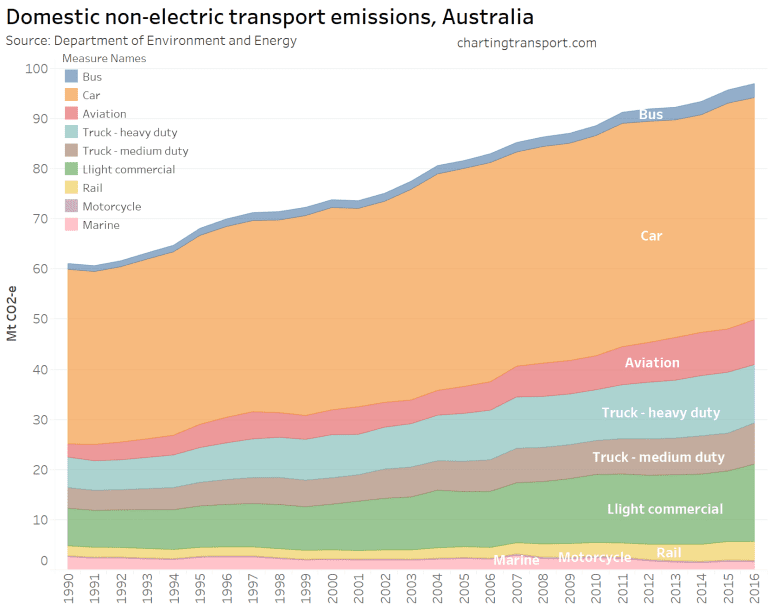
Exhibit #2: All forms of transport contribute to increasing transport-based carbon emissions, except marine
Contribution to carbon emissions by domestic aviation has grown the fastest, followed by buses. Passenger cars have increased by 27 per cent and remain the largest contributor.
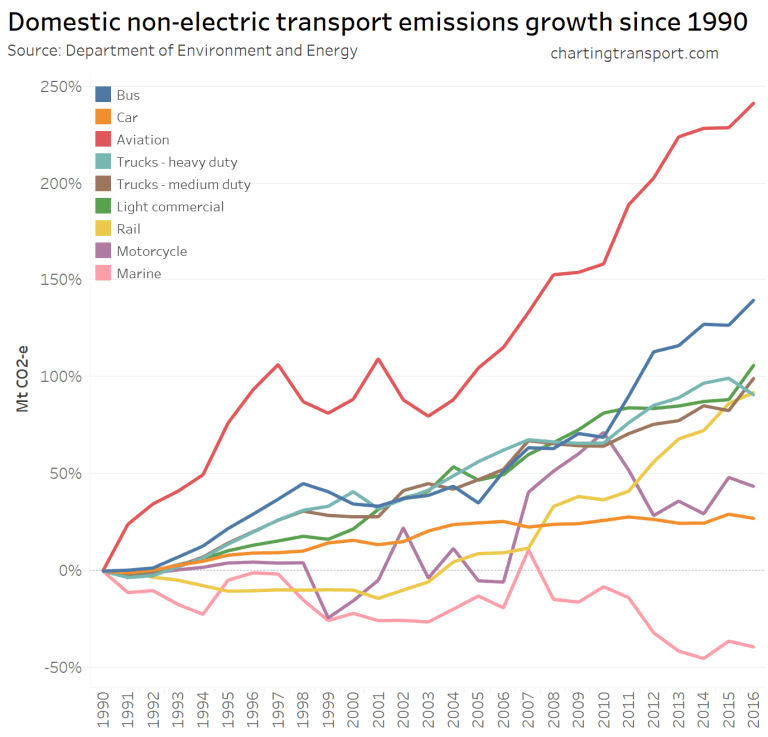
Exhibit #3: Western Australia, Northern Territory and Queensland are the biggest offenders
Sorry folks, we know you guys have very long distances to travel! Congratulations however go to Queensland for paving the way for zero emissions transport with its Electric Super Highway EV charging network, and big hands clap to the ACT, which has been working steadily towards reducing transport emissions with policies like promising 100 per cent of its fleet vehicles will be zero emissions starting 2020-21.
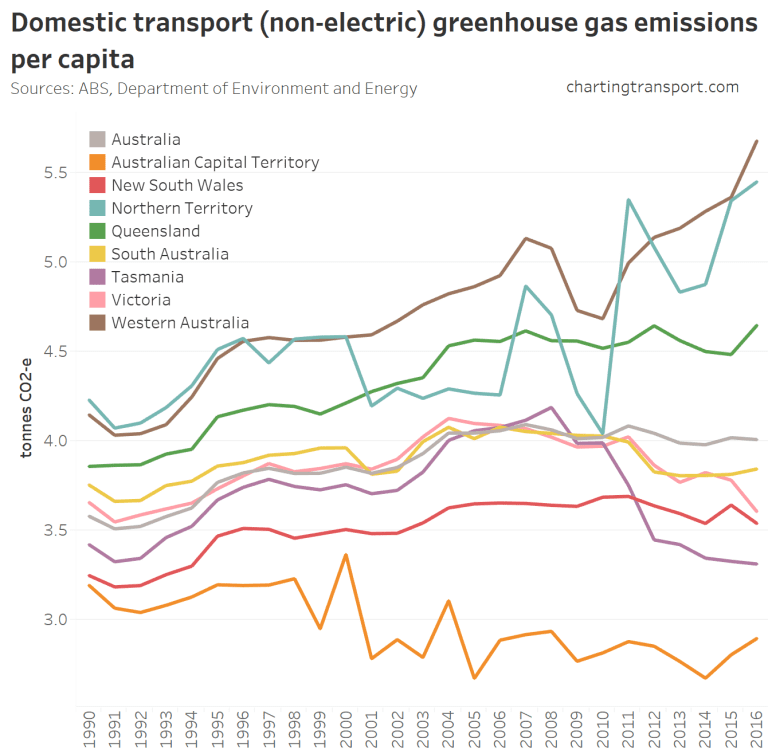
Exhibit #4: While per capita GHG emissions have been reducing, car ownership has been growing
OK this is actually two graphs. but it goes to show: while per capita, transport-based emissions have been reducing, the overall numbers are still on the rise, at least in part because of growing numbers of people owning cars.
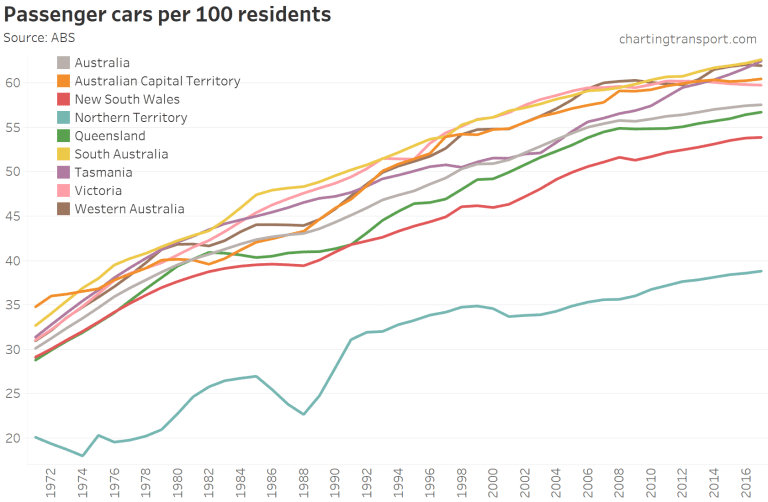
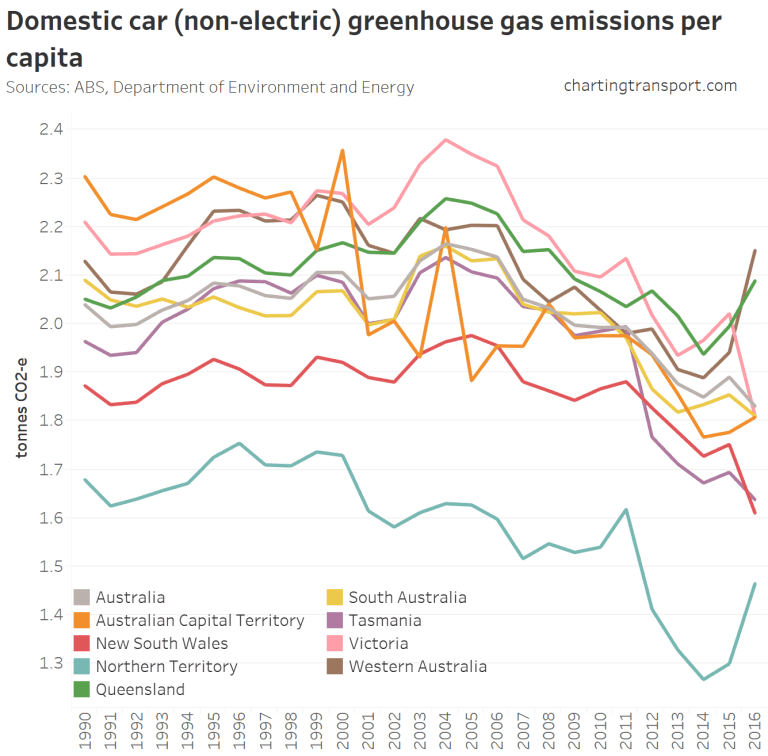
“Of course if we are to avoid dangerous climate change, total emissions need to reduce substantially, not just per capita emissions!” writes Loader.
And therein lies the rub; we are doing something, but even if it’s only on a personal level, it’s just not enough.
Per capita reductions are not a measure we can refer to: if Australia is to truly meet – and dare we say, exceed – its carbon reduction targets, it needs to be overall, and the transport sector has an important role to play.

Bridie Schmidt is associate editor for The Driven, sister site of Renew Economy. She has been writing about electric vehicles since 2018, and has a keen interest in the role that zero-emissions transport has to play in sustainability. She has participated in podcasts such as Download This Show with Marc Fennell and Shirtloads of Science with Karl Kruszelnicki and is co-organiser of the Northern Rivers Electric Vehicle Forum. Bridie also owns a Tesla Model Y and has it available for hire on evee.com.au.


